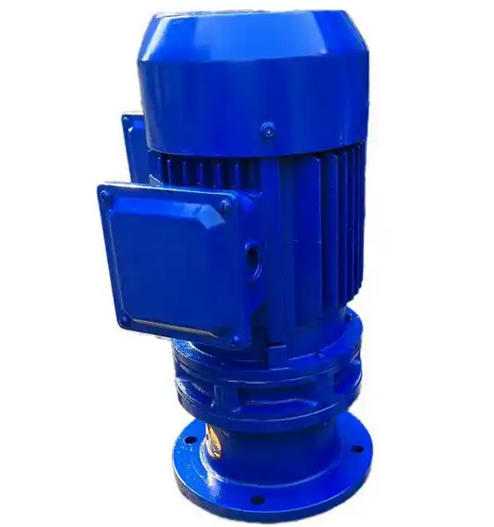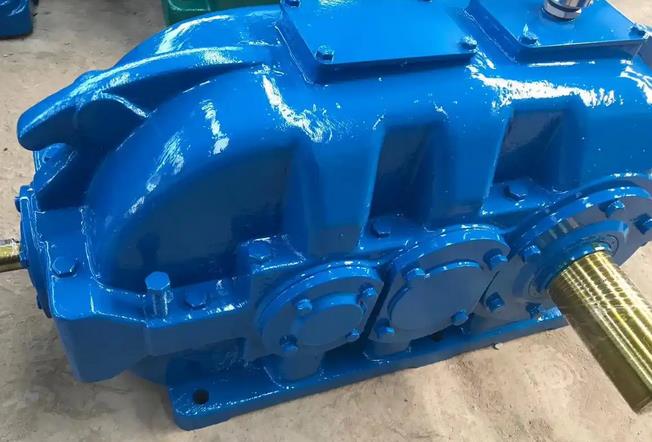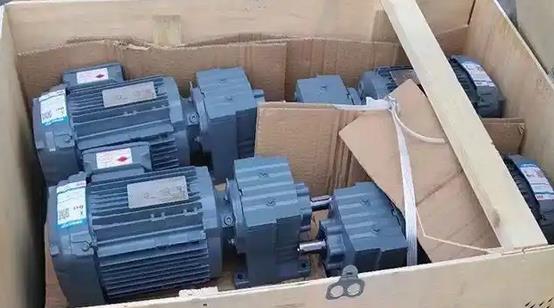How long can BLD13-23-5.5KW cycloidal pinwheel reducer continue to operate after lubrication system failure
There is no fixed answer to this question. The remaining operating time of the BLD13-23-5.5KW cycloidal pinwheel reducer after a lubrication system failure depends entirely on three core factors: the type of fault, load conditions, and ambient temperature. The difference can range from a few minutes to several hours, with significant variations.1. The type of fault determines the underlying risk
Different lubrication faults can cause varying degrees of damage to the gearbox, directly affecting the remaining operating time.
Complete interruption of lubricating oil: This is the most dangerous situation. Once the oil circuit is blocked or the oil pump fails, causing the oil supply to stop, the internal components (cycloidal gears, needle teeth, bearings) will quickly lose their oil film protection and the metal will directly rub against it. Under rated load, severe wear and even jamming may occur within 5-30 minutes.

Serious shortage of lubricating oil (below the minimum oil level): Insufficient oil film thickness, intensified local friction, and wear rate 10-20 times faster than normal. If it continues to operate, abnormal noise and temperature rise will usually occur within 1-3 hours, and continued use will result in component scrapping.
Lubricating oil deterioration/contamination: The viscosity of the lubricating oil decreases, contains impurities, and the lubrication effect fails, but the process is relatively slow. It may gradually increase wear and tear within a few hours to a day, but if not detected in a timely manner, it will ultimately lead to component damage.
2. Load and temperature accelerate or delay damage
Under the premise of determining the type of fault, the load and temperature will further shorten or slightly prolong the operating time.
Load factor: If the gearbox is in a fully loaded or overloaded state, the pressure between components will be greater, and the heat generated by friction will be more, which will accelerate wear and bonding, and the remaining operating time may be shortened by 30% -50%. On the contrary, if it is in an unloaded or lightly loaded state, the wear rate slows down and may last for an additional 1-2 hours, but it is still not recommended to continue operating.
Environmental temperature: High temperature environments can accelerate the oxidation of lubricating oil, reduce its lubrication performance, and make it more difficult for components to dissipate heat, further shortening operating time. Although low temperature environment has an impact on the viscosity of lubricating oil, it has a smaller effect on the operation time after failure compared to high temperature.
Core recommendation: Immediately shut down for inspection instead of estimating running time
No matter how long the remaining operating time is, continuing to operate after a lubrication system failure is considered a "destructive operation" that can cause irreversible component damage and significantly increase maintenance costs. The correct approach is:
Immediately stop the machine, cut off the power supply, and avoid further damage.
Check the cause of the malfunction, focusing on whether the oil circuit is blocked, whether the oil pump is working, whether the oil level is normal, and whether the lubricating oil has deteriorated.
After repairing the fault cause, replace it with a new qualified lubricating oil, confirm that the lubrication system is normal, and then restart the equipment.



